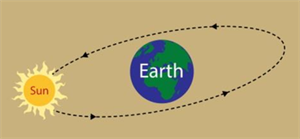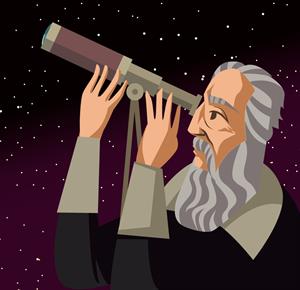
PUMPA - SMART LEARNING
எங்கள் ஆசிரியர்களுடன் 1-ஆன்-1 ஆலோசனை நேரத்தைப் பெறுங்கள். டாப்பர் ஆவதற்கு நாங்கள் பயிற்சி அளிப்போம்
Book Free DemoOur ancestors observed the changes occurring in the starry sky at night. They noticed the sunrise in the east and set in the west, and the moon seemed to revolve around the earth. These movements made our ancestors believe that the earth was stationary and all the other celestial objects moved around it.

Night sky
Geocentric model:
People believed in a model known as the geocentric model in which the Earth was at the centre of the universe, and all the other planets, moon, sun and stars were orbiting around it.

Geocentric model
The geocentric model was supported by many astronomers around the world, such as the Greek astronomer Ptolemy in the \(2^{nd}\) Century, an Indian astronomer Aryabhatta in the \(5^{th}\) Century.
\(\)

Aryabhatta
Aryabhatta (\(476−550\ C.E\)) is a well-known astronomer of ancient India. At the age of \(23\), he formulated the diameter of the Earth close to the present known value, which is \(12,742\ km\).
Heliocentric model:
Nicolaus Copernicus, a Polish priest and astronomer, proposed the heliocentric model. The Greek word 'Helios' means the 'Sun'.
The heliocentric model states that it was not the Earth, but the Sun was at the centre of the solar system, and the other planets revolved around it.

Heliocentric model
Copernicus gave this idea about \(500\) years ago. But it was published in the year of his death in \(1543\). Again, the same idea was confirmed by Galileo Galilei in \(1608\) when he designed the telescope in the Netherlands.

Galileo Galilei with a telescope
Further information collected using the telescope gave enough evidence that all the planets revolve around the Sun. Thus, the invention of the telescope created a revolution in the field of astronomy.
Astronomy is a branch of science that deals with the study of celestial objects such as the sun, stars, planets, moon and the phenomena related to it.
In the olden days, people were highly advanced in the knowledge of astronomy. They devised calendars and almanacs by performing various observations on the path of celestial objects.